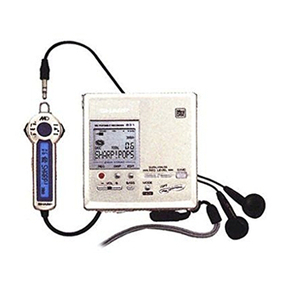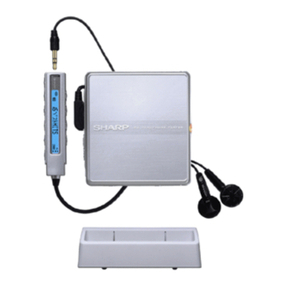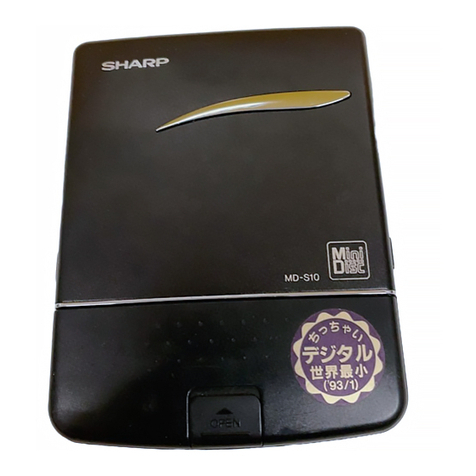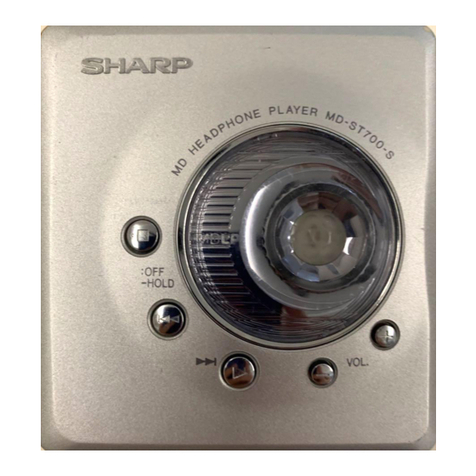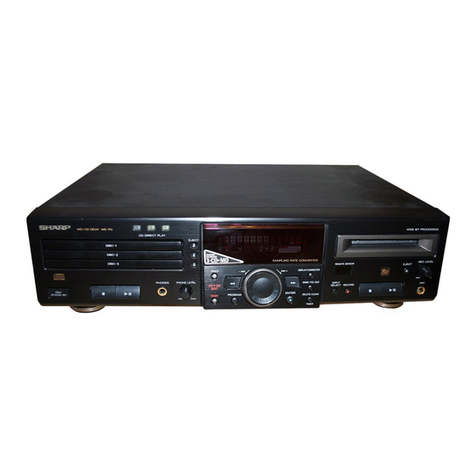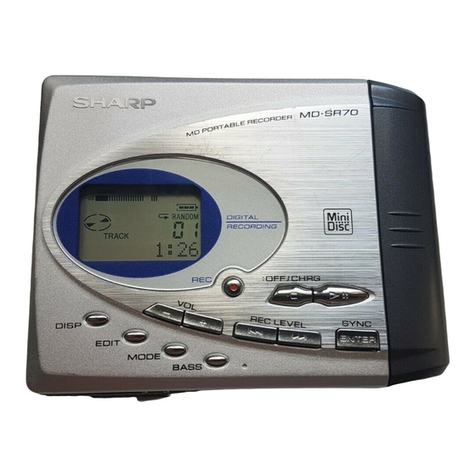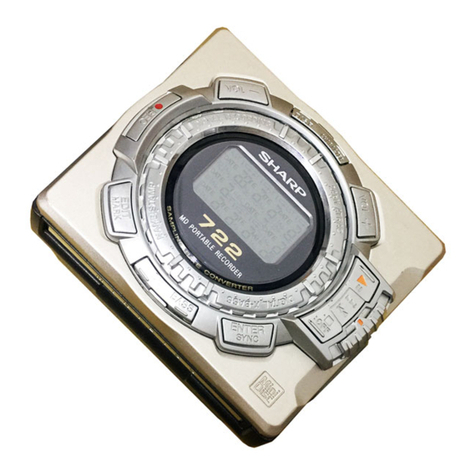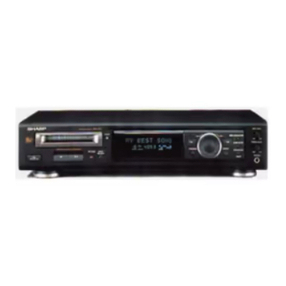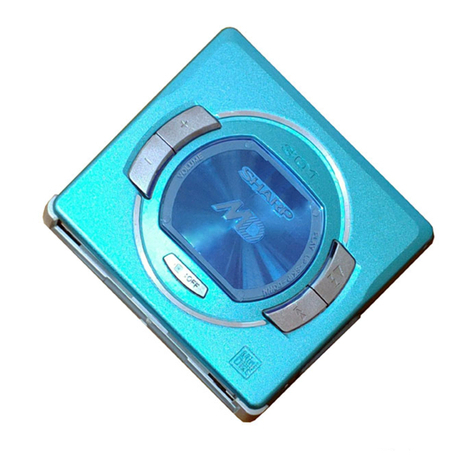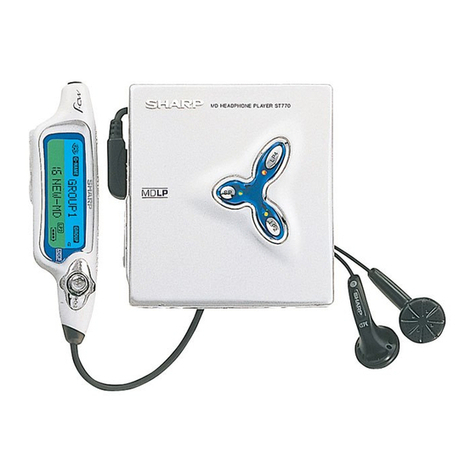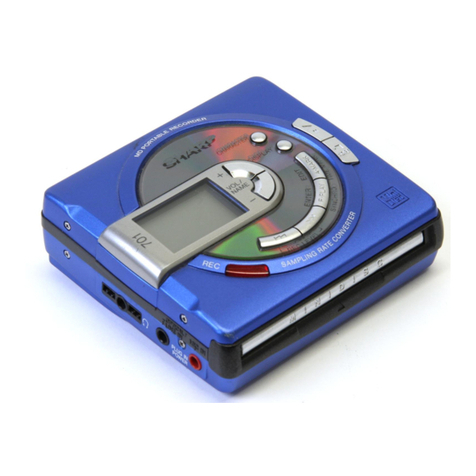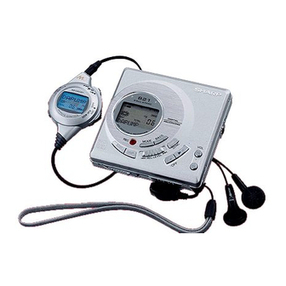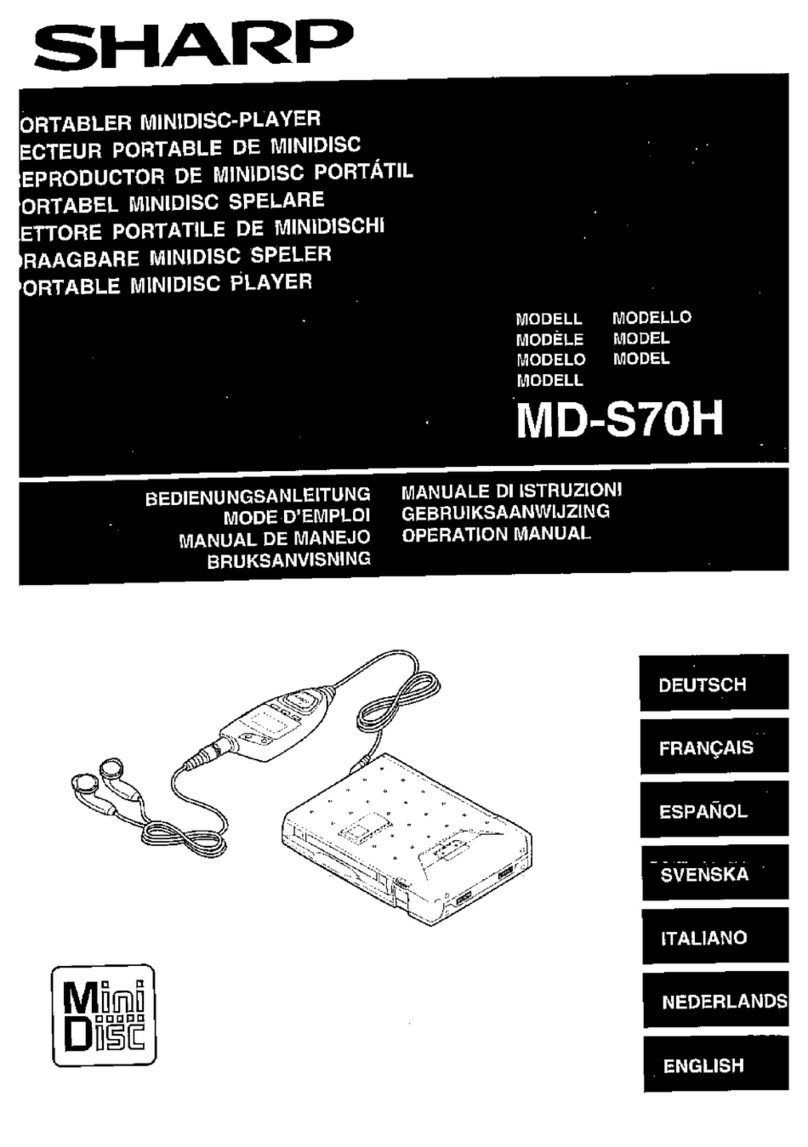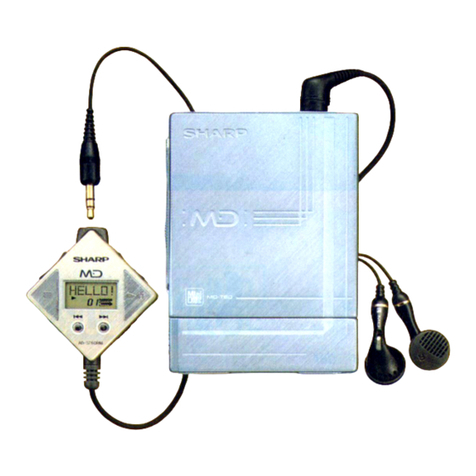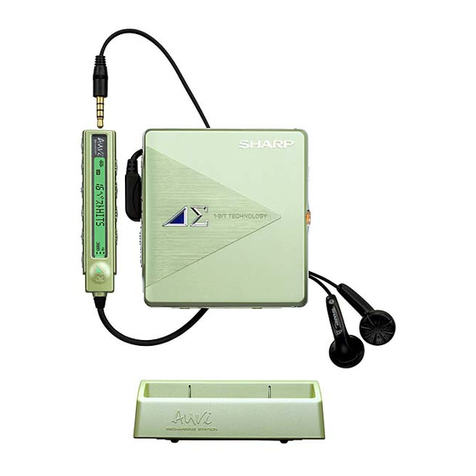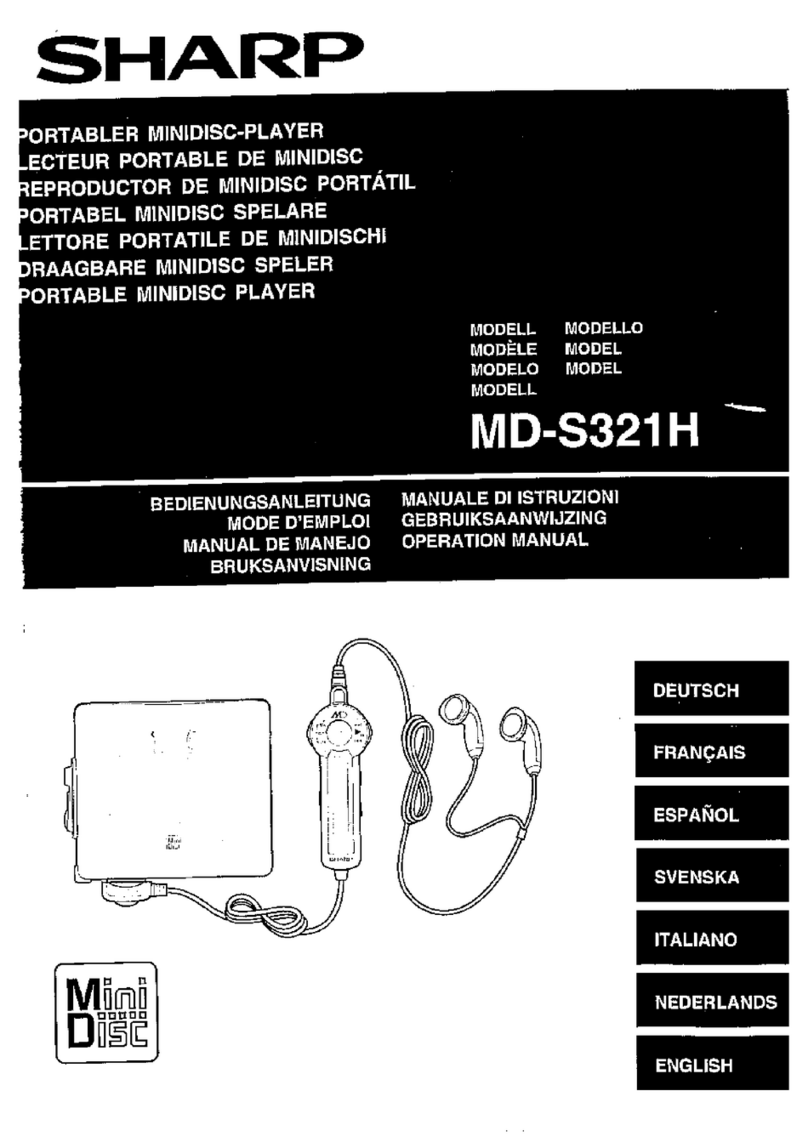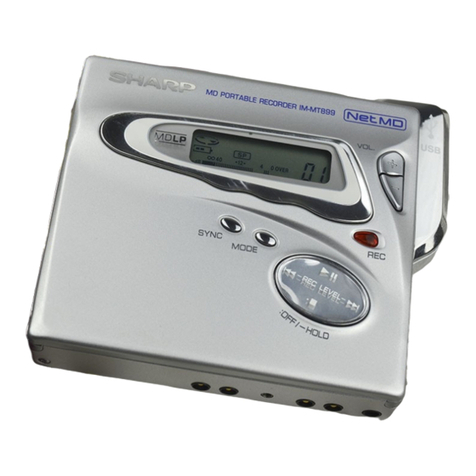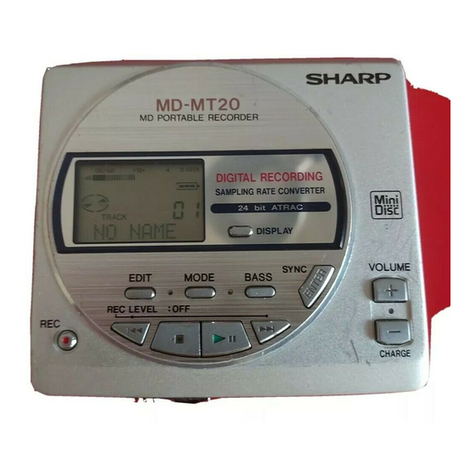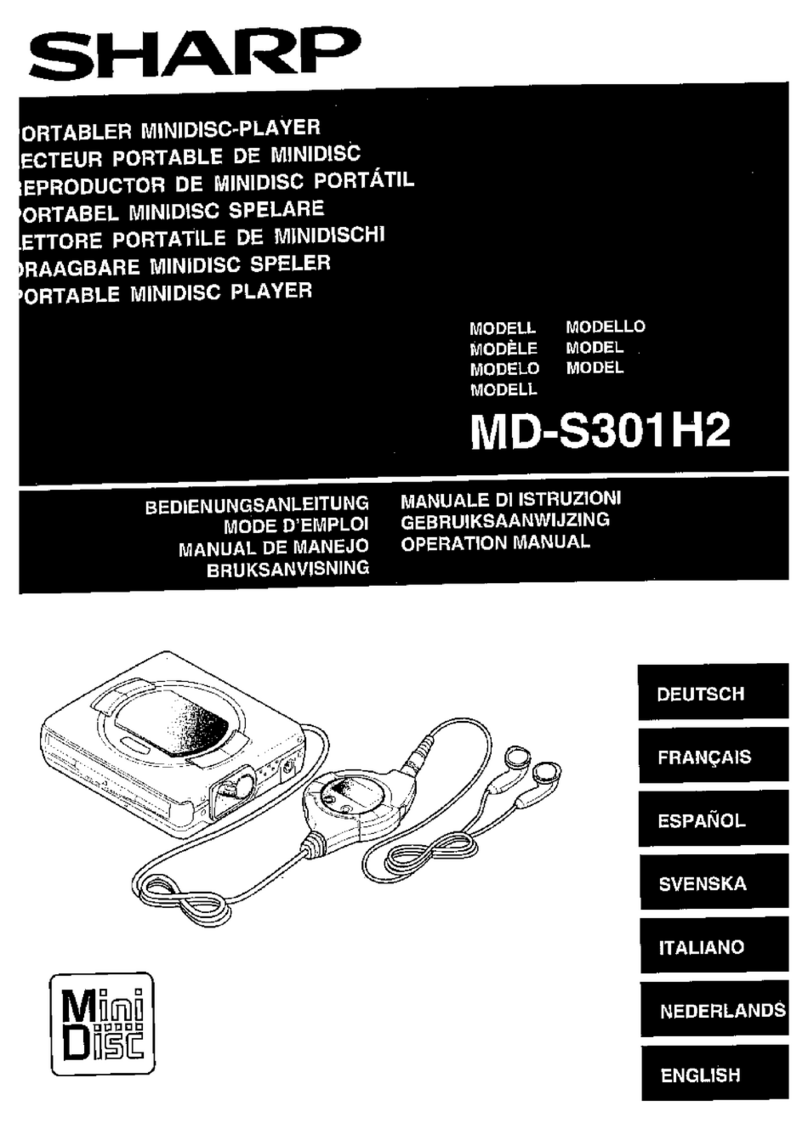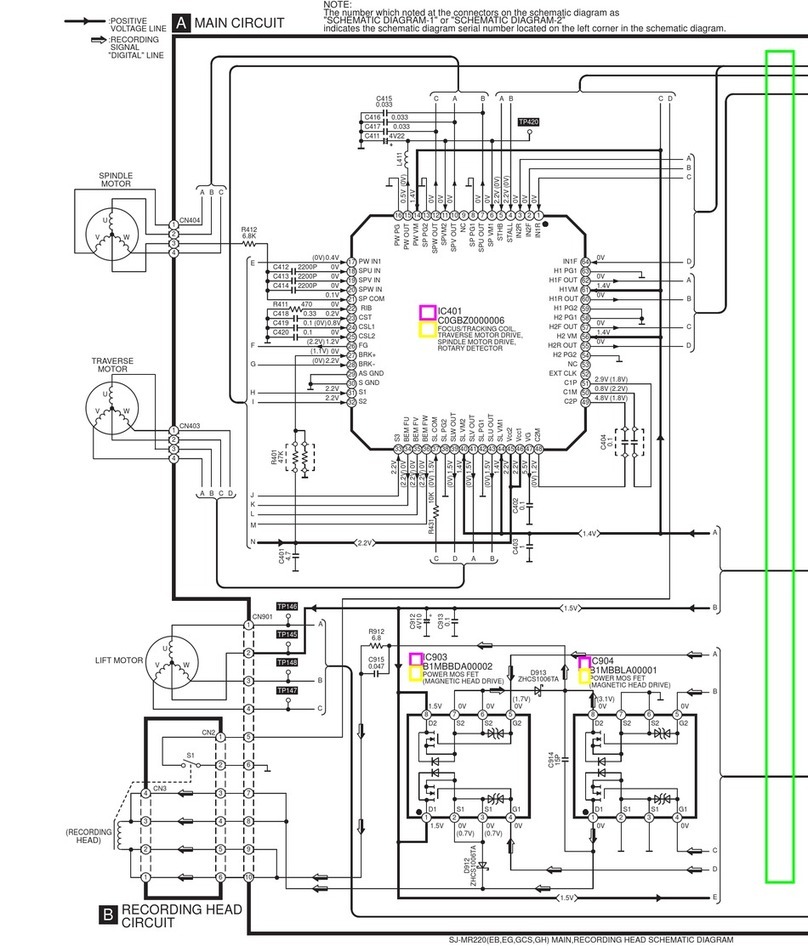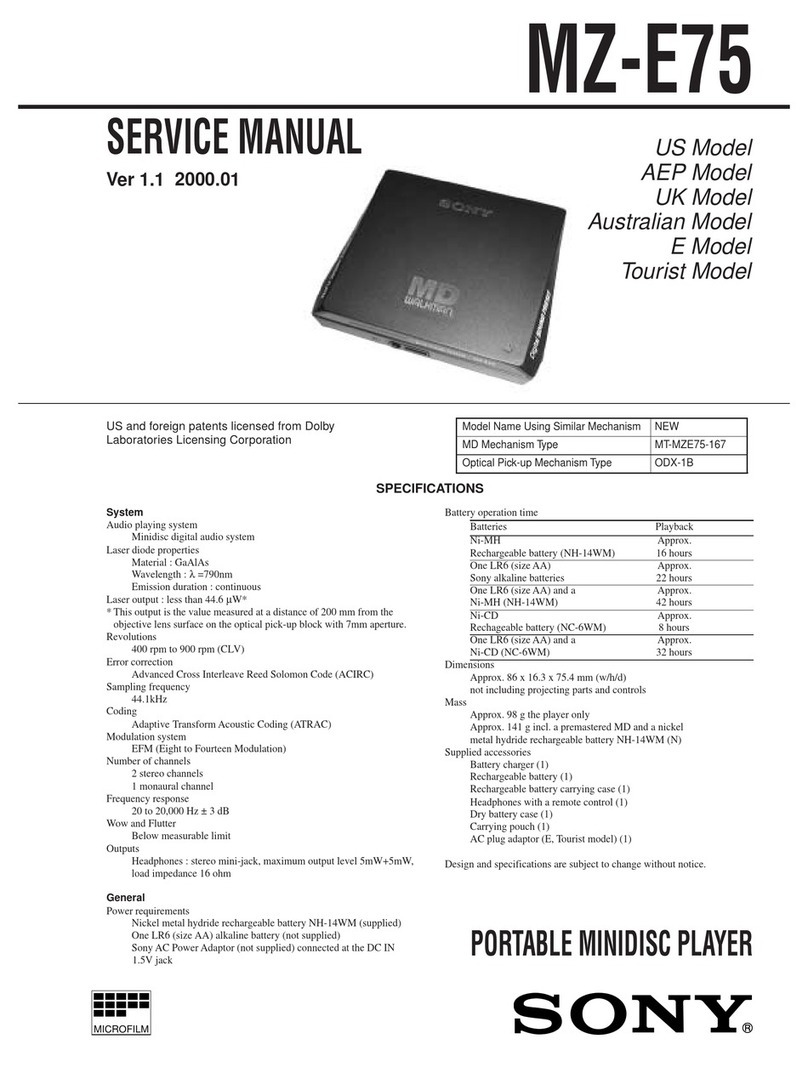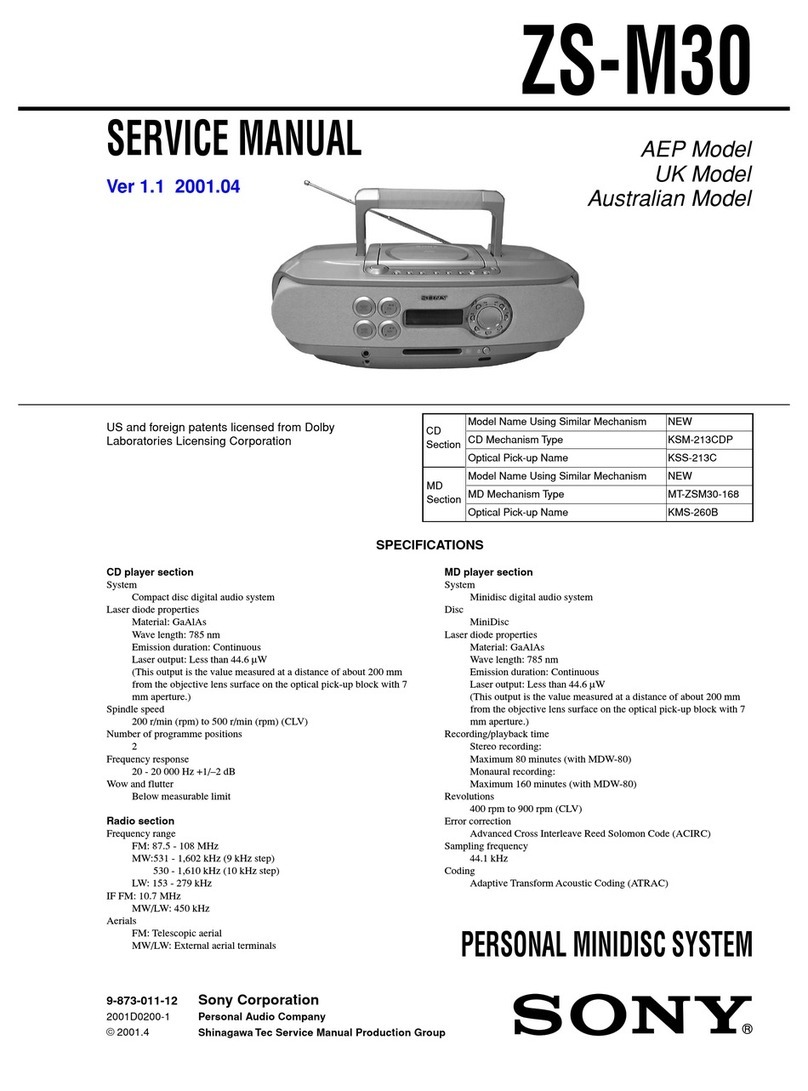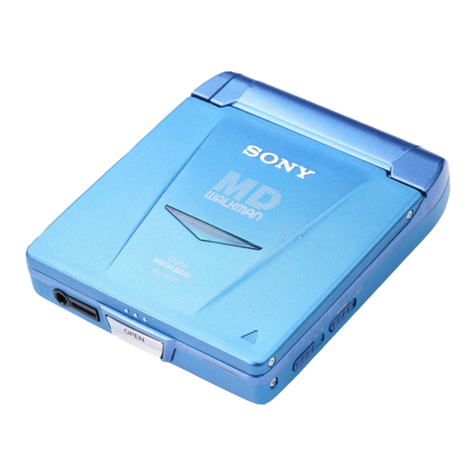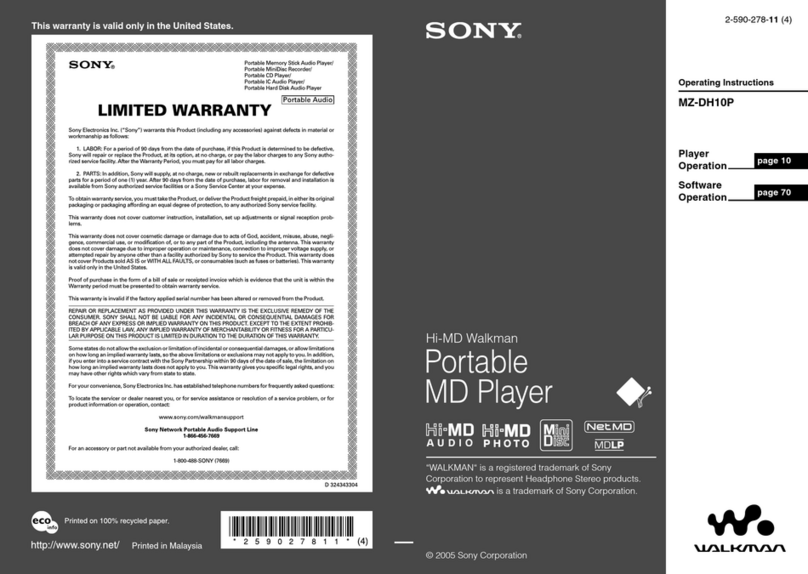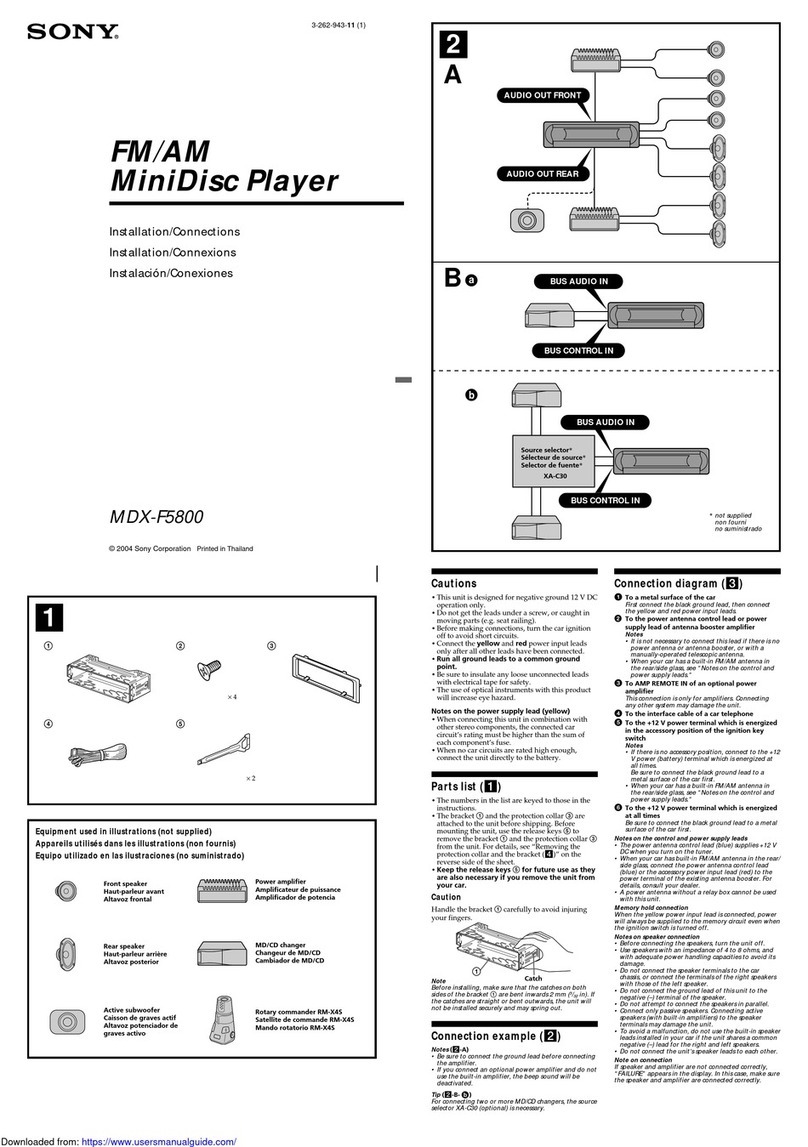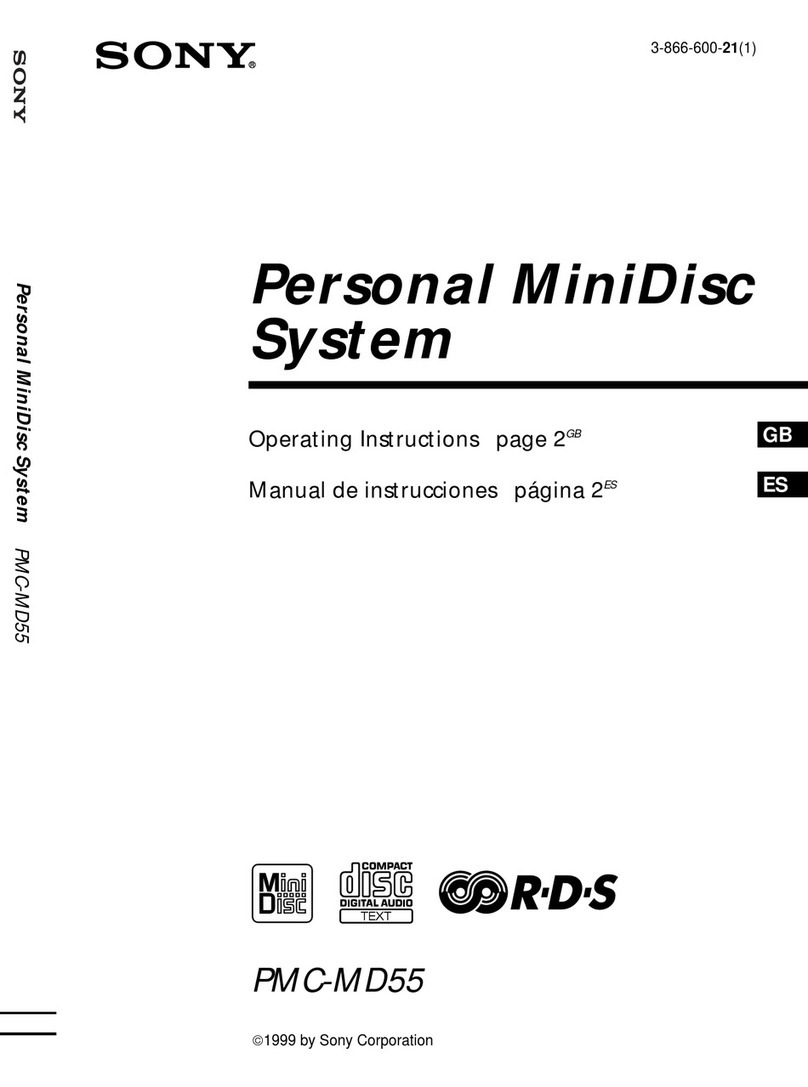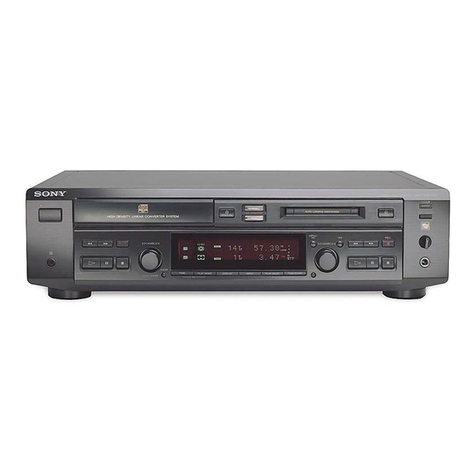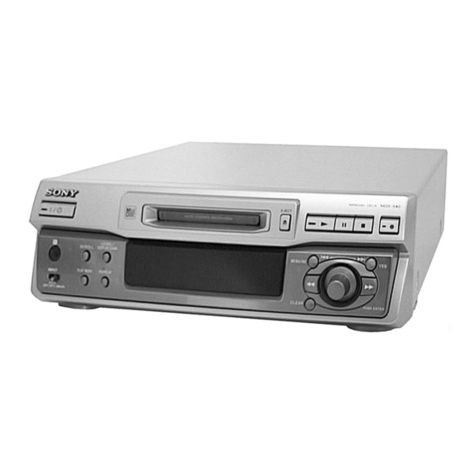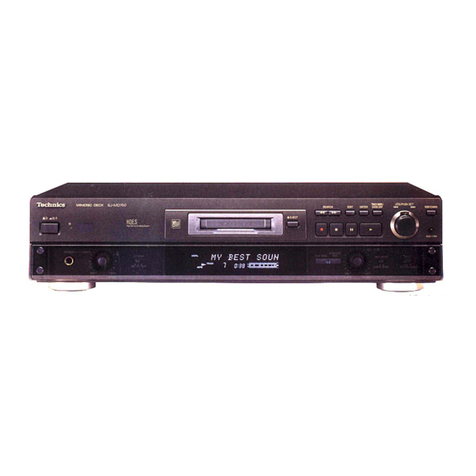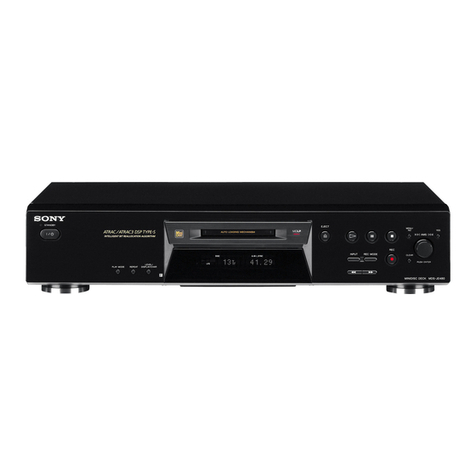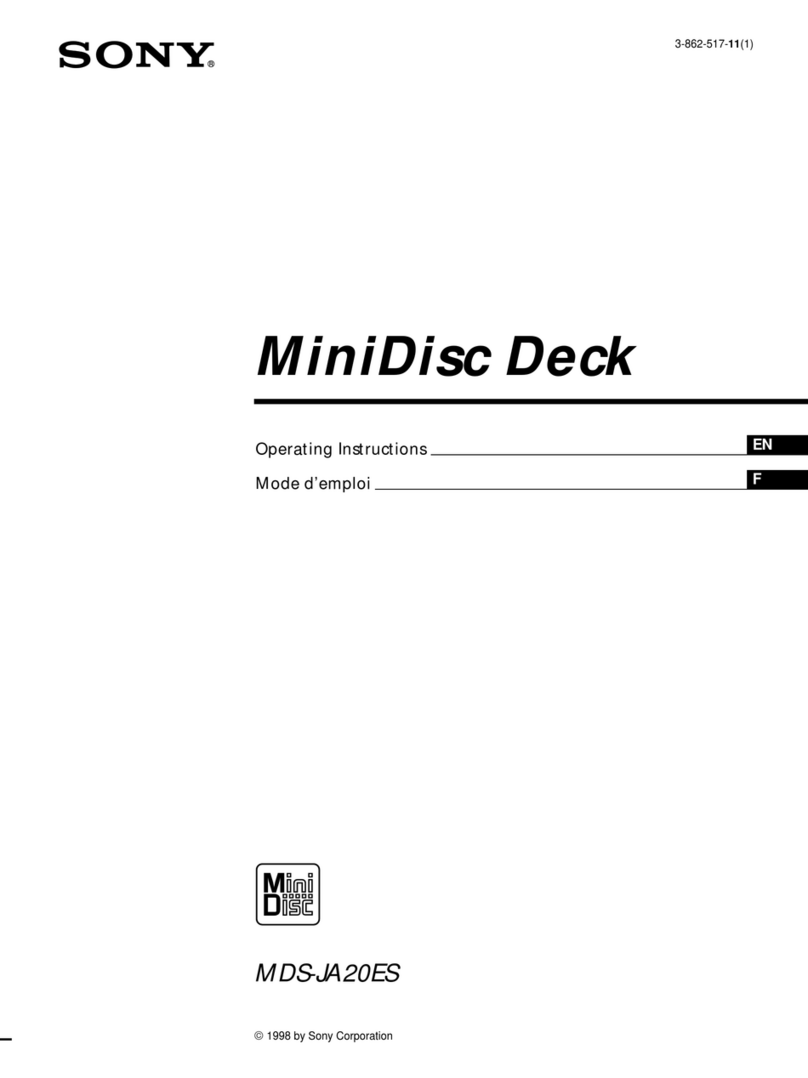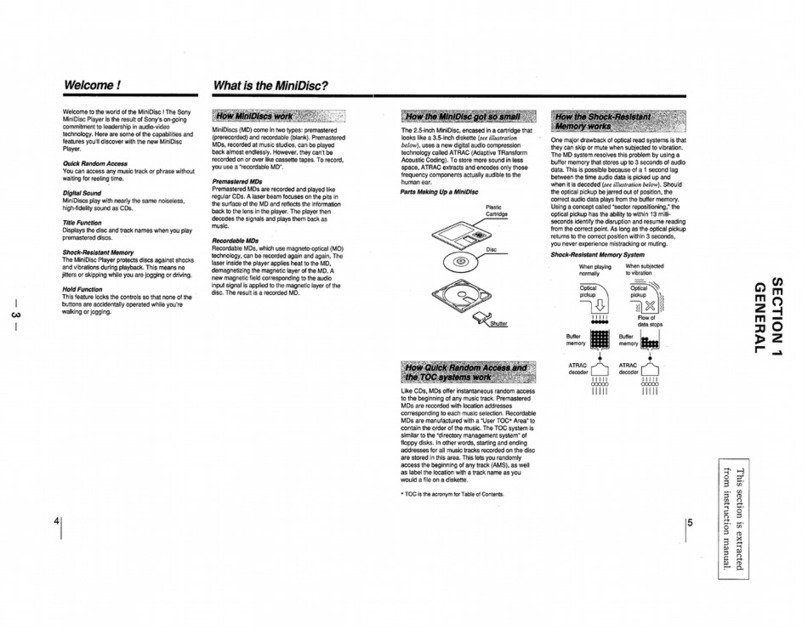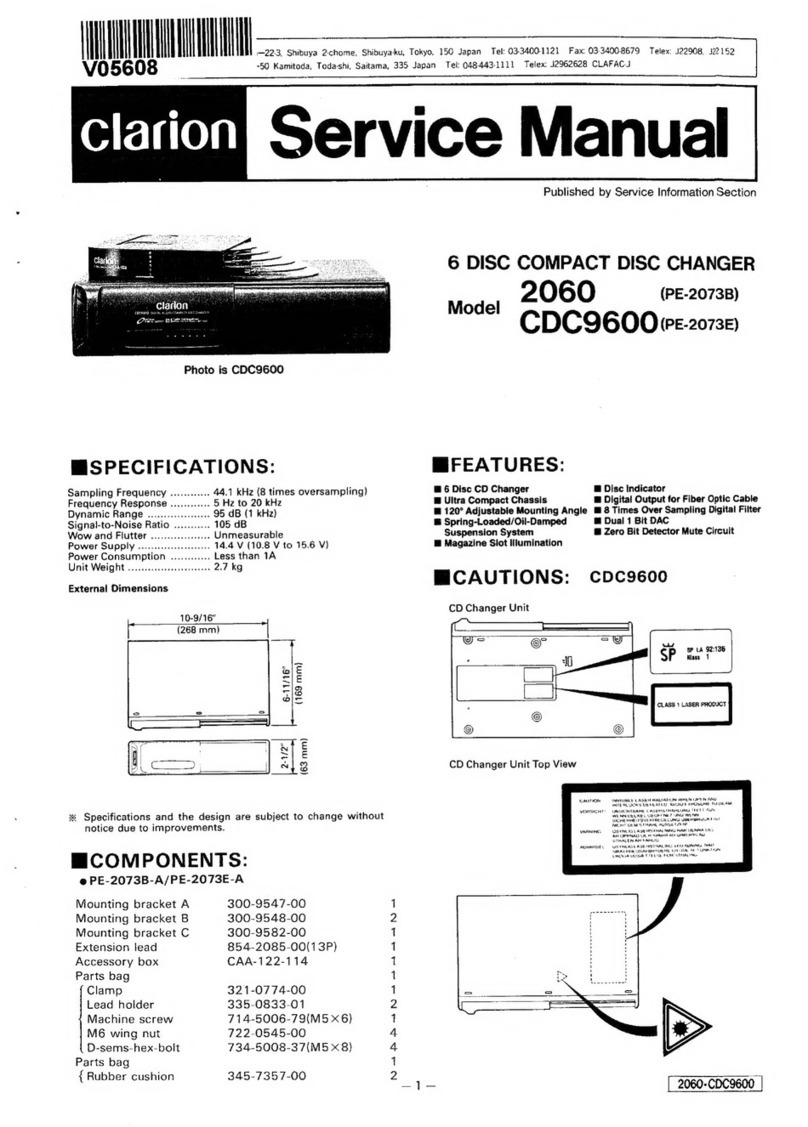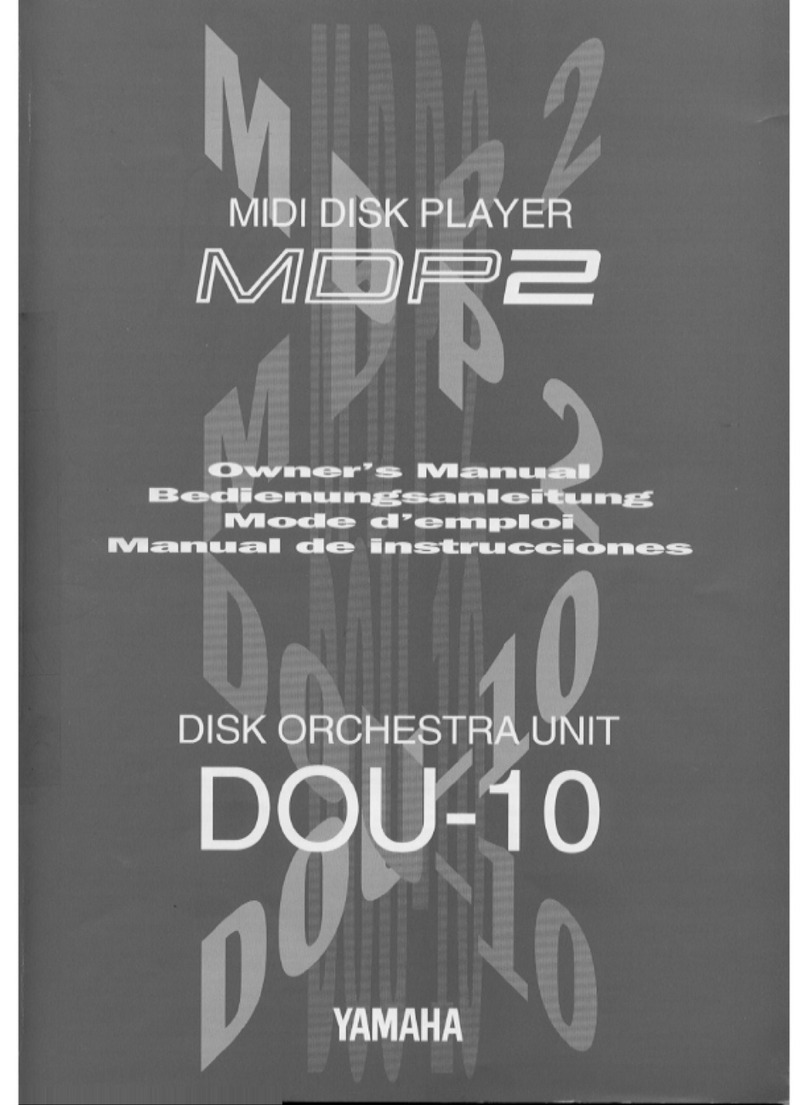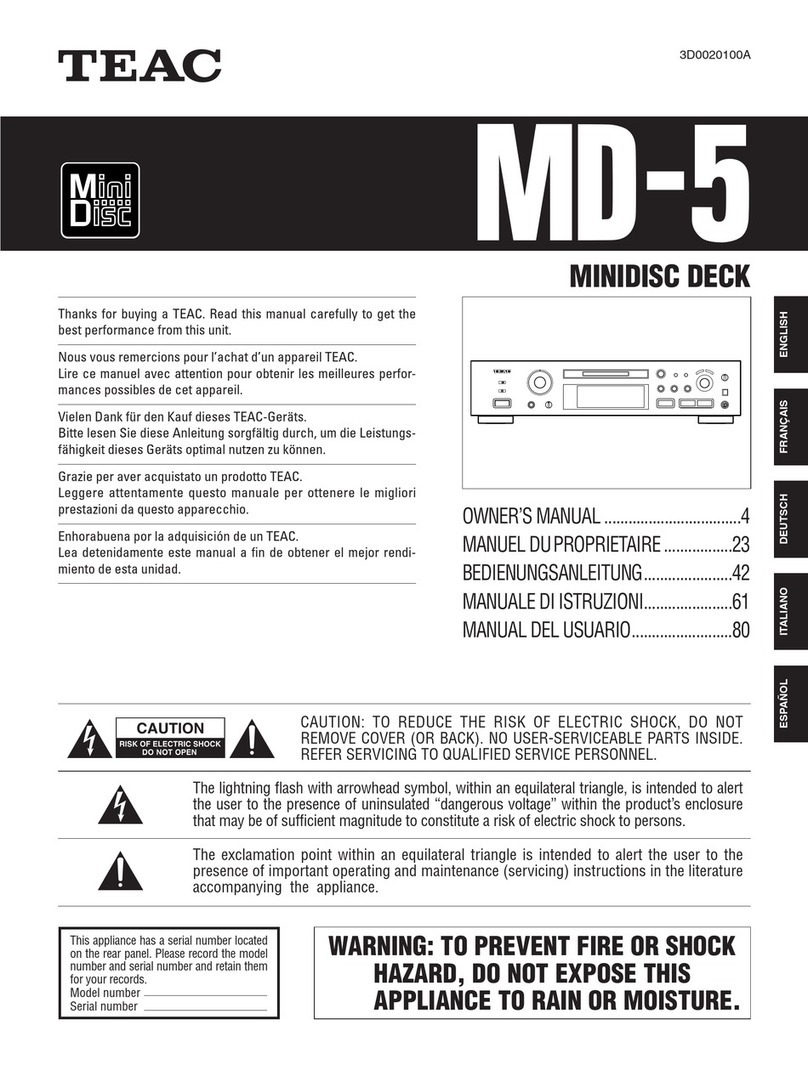(Continued)
Moisture condensation
In the following cases, condensation may form inside
the unit.
Shortly after turning on a heater.
When the unit is placed in a room where there is ex-
cessive steam or moisture.
When the unit is moved from a cool place to a warm
place.
When the unit has condensation inside, the disc signals
cannot be read, and the product may not function
properly.
If this happens, remove the disc, and open the disc
holder. The condensation should evaporate in approxi-
mately 1 hour. The unit will then function properly.
If a problem occurs
If this product is subjected to strong external inter-
ference (mechanical shock, excessive static electricity,
abnormal supply voltage due to lightning, etc.) or if it
is operated incorrectly, it may malfunction or the display
may not function correctly. If such a problem occurs,
do the following:
Unplug the AC power lead from the AC socket.
Wait about 20 - 30 seconds and then plug the AC power
lead back into the AC socket.
Press the reset button on the back of the unit.
When the reset button is pressed, all of the settings in
memory will be erased.
If strange sounds, smells or smoke come out of the unit
or if a foreign object falls into the unit, turn off the power,
unplug the AC power lead from the AC socket, immedi-
ately. Contact the shop where you purchased the unit.
If a power failure occurs during recording
If the AC power plug is disconnected from the AC socket
or a power failure occurs during recording (before the
TOC information has been recorded on the disc), the
audio portion being recorded at that time will be erased.
When a recording is being added to a MiniDisc which
already has a recording on it, if the TOC is not updated
before the power failure, the added recording will be
erased.
If a power failure occurs or the AC power lead is dis-
connected for about 10 minutes, when power is restored,
the TOC will be written on the disc.
RESET
Pen, pencil, etc.
REMOTE CONTROL
Proper use of the remote control
Aim the remote control at the remote control sensor within 30
o
with no obstacles, and operate as shown.
Notes concerning use:
Replace the batteries if the control distance decreases or
operation becomes erratic.
Periodically clean the transmitter window on the remote
control and the sensor on the main unit with a soft cloth.
Exposing the sensor on the main unit to strong light can
interfere with operation. Change the lighting or the direction
of the unit.
Keep the remote control away from moisture, excessive heat,
shock, and vibrations.
The remote control's usable range is between 0.2 m (8") and
6 m (20') away from the sensor.
15
15
0.2 - 6m (8" - 20')
1
2
3
(Continued)
When an error message is displayed, proceed as follows:
Error messages Meaning Remedy
BLANK MD Nothing is recorded.
(Neither music nor a disc name have been
recorded on this MD.)
Replace the disc with a recorded disc.
Can't COPY You tried to record from a disc which you are
not allowed to copy. Replace it with another disc which you can
copy from (regular CD).
Can't EDIT A track cannot be edited. Change the stop position of the track and then
try editing it.
Can't REC Recording cannot be performed correctly due to
vibration. Move the unit away from the source of vibration.
DEFECT Since this disc has scratches on it, the
recording operation was skipped. Replace the disc with another recordable disc.
Din UNLOCK Incorrect digital signals are input. Connect correct digital signals.
Use the analogue input socket.
DISC ERR The disc is damaged or there is no TOC on the
disc. Reload the disc or replace it.
DISC FULL The disc is out of recording space. Replace the disc with another recordable disc.
FOCUS ERROR The proper focus cannot be obtained. Reload the MiniDisc.
MD ERROR The unit has determined that it is out of order
by performing a self-diagnosis. Ask the store where you purchased this unit,
about repairs.
MECHA ERR* There is a mechanical problem and the disc is
not working properly. Press the ON/STAND-BY button to enter the
stand-by mode, and press the button.
NAME FULL The number of characters for the disc name or
track name exceeds 100. Shorten the disc or track name.
NO DISC A MiniDisc has not been loaded.
The MiniDisc data cannot be read. Load a MiniDisc.
Reload the MiniDisc.
NOT AUDIO The data recorded on this disc is not audio data. Select another track.
Replace the MiniDisc.
PLAYBACK MD You tried to record on a playback-only disc.
The data of disc names and track names are
not able to move from playback-only discs.
Replace it with a recordable MiniDisc.
Edit only the sound.
PROTECTED The MiniDisc is write protected. Move the write protection tab back to its original
position.
TEMP OVER The temperature is too high. Press the ON/STAND-BY button to enter the
stand-by mode, and wait for a while.
TOC ERR* The disc has a large amount of damage.
TOC information cannot be read.
The MD does not meet the specifications for
MDs.
Replace the disc with another disc.
TOC FULL* There is no space left for recording character
information (track names, disc names, etc.) Replace it with another recordable disc.
TOC W ERROR The unit has determined that it is abnormal by
performing a self-diagnosis. Ask the store where you purchased this unit,
about repairs.
U TOC ERR* The TOC information on this disc does not
meet the MD specifications or it cannot be read. Replace it with another disc.
Erase all the data, and try recording.
U TOC W ERR The TOC information could not be created
properly due to a mechanical shock or to
scratches on the disc.
Press the ON/STAND-BY button to enter the
stand-by mode, and try to write the TOC again.
(Remove any source of shock or vibration whilst
writing.)
? DISC The data contains an error. Replace the disc with another disc.
0 0:00 Music is not being recorded. Replace the disc with a recorded disc.
*: Number or symbol
